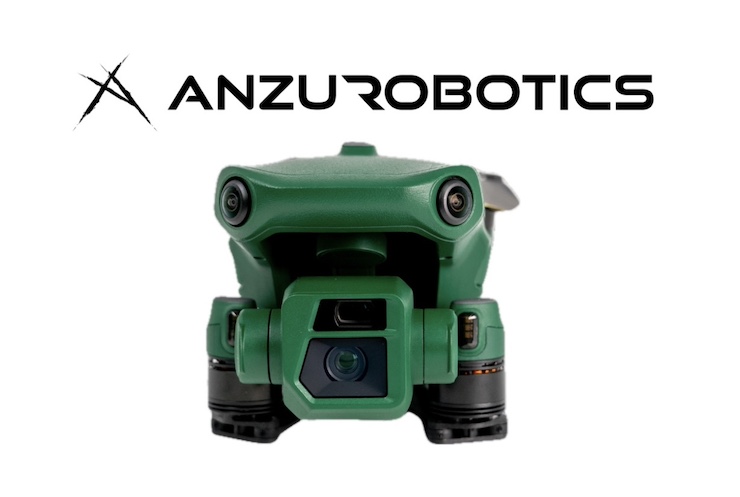Backed by DJI, Newcomer ANZU Seeks a Foothold in the US Drone Industry

Can American UAV companies really make a dent in China-based DJI’s near monopoly over global drone sales? With pressure rising in Congress to curtail DJI’s access to the US market – and with bans on their use already in place in states like Florida and Tennessee – some U.S. drone firms are stepping up to fill the void. The efforts of some of the larger NDAA-certified UAV companies, like Skydio, BRINC, Skyfish and Parrot – anxious to enter the lucrative US defense sector – have become well-known. But a growing number of smaller, less well-known companies operating in smaller niches are also making fresh moves – and not without breeding controversy.
A good example is Austin, TX-based ANZU Robotics, manufacturer of the Raptor and Raptor T commercial camera drones, which debuted late last week. The Raptor features a 20mp CMOS wide-angle camera coupled with a 12mp camera, while the T version adds infrared thermal imaging capabilities – ideal for search-and-rescue, criminal pursuit and fire control missions. Both drones can also fly for about 45 minutes over a 9 mile range, and include an optional RTK module for added stability, plus long-lasting swappable batteries. All of these capabilities are comparable to those of the DJI Mavic 3 Enterprise drone, but at a much higher price point – $5,100 for the Raptor and $7,600 for the Raptor T. Still, those prices will make the Raptors highly competitive with US-based rivals like BRINC and Skydio – which could give ANZU a distinct competitive edge, assuming that DJI’s pole position in the market continues to fade.
In fact, it’s not quite clear what is going on here. ANZU has signed a strategic licensing agreement with DJI to incorporate the Chinese company’s technology into the Raptors, which means the two aircraft are, to an unknown extent, still DJI-made drones. The main difference? The two drones are manufactured outside of China in Malaysia, so a US-based firm controls the actual manufacturing. In addition, the Raptors also use domestically-developed software created in collaboration with another strategic partner, Aloft Technologies. This is potentially a rather clever – indeed, sneaky – way to circumvent potential bans and current restrictions imposed on Chinese-tech in the US, all the while taking advantage of the best DJI technology – at a steeper price.
In their promotional releases, ANZU officials seem to recognize – without fully acknowledging – the ingenuity of their marketing effort. “[We have] the best drone technology in its class without the strains of geopolitics. We are certain the performance is going to be undeniably good, but the security of data and confidence for long-term investment in the United States is unprecedented with the quality and affordability of our drones,” one release reads.
There’s another wrinkle at work here, too. ANZU CEO Randall Warnas once worked at DJI, before moving to another China-based company Autel Robotics, where he lasted just a few weeks. Autel has made similar claims about its drones relative to DJI, though many industry observers have cast doubt on the company’s ability to compete with DJI in terms of quality and customer service. Warnas’ brief stint there did raise his visibility, and his departure – supposedly over discontent with Autel marketing practices – also won him new fans in the industry, which could well aid his efforts to promote the Raptors.
But the appearance of the Raptors only seems to raise questions about the wisdom and effectiveness of the pending DJI bans. Are DJI and ANZU subtly collaborating behind the scenes to spread DJI’s technology – only now with a Made-in-USA label, and at much higher prices? ANZU, for its part, denies that it plans an ongoing strategic partnership with DJI, saying the current licensing agreement is for the current generation of Raptors – and no further. And it seems that the Raptors – which do have their own distinct software components – are not simply DJI Mavic 3s in a new, distinctly green colored, wrapper.
Ultimately, it will be their performance in the field – assuming they begin to sell – that will determine the Raptors’ fate. And in a competitive market economy, that’s how it should be – geopolitics be damned.
|